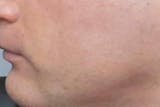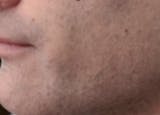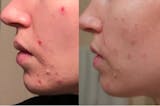Phototherapy uses UV light to reduce eczema's inflammation and itching; it works well with other treatments.
Many forms of phototherapy exist; each type has unique efficacies, mechanisms, and safety profiles.
Phototherapy, also known as light therapy, is a treatment for eczema that involves exposing the skin to ultraviolet (UV) light. This type of therapy has been used since 1970s and has shown to be effective in reducing inflammation and itching associated with eczema, and can be used in combination with other treatments such as topical creams and ointments.(PÉR 2015)
In this blog post, we will explore the different types of phototherapy available for treating eczema, including narrowband UVB, UVA1, and PUVA. We will also discuss the benefits and risks of phototherapy, as well as the latest research on the topic.
By the end of this post, you will have a better understanding of how phototherapy can be used to treat eczema and whether it may be a suitable treatment option for you.
JUMP TO SECTION:
Introduction to Light and Phototherapy
In the context of eczema, the use of phototherapy has evolved significantly over the past decades. With the advent of technologies that can generate specific and controlled wavelengths of UV light, phototherapy has become a mainstream treatment option for eczema patients who don't respond well to traditional therapies or seek a systemic treatment with fewer side effects.
However, as with any therapeutic approach, it is essential to understand the nuances of phototherapy, including the different types, their effectiveness, and potential risks.
Visible light refers to the part of the electromagnetic spectrum that we can see. UV light is just beyond visible light with a wavelength between 10 and 400 nanometers.
Research indicates that different wavelengths within the UV part of the spectrum have different potential actions on the skin and therefore different risks and benefits. For example, UV-A wavelengths (315-400 nm) can suppress the immune system and is associated with skin aging. UV-B wavelengths (280-315 nm) may help with reducing inflammation and itching but are more associated with sunburn.
Understanding Different Types of Phototherapy for Eczema
There are various forms of light therapy for eczema, each utilizing different parts of the UV spectrum. The common types include:
Broadband UV-B (BB UV-B)
Narrowband UV-B (NB UV-B)
Broadband UV-A (UV-A)
Psoralen plus UVA (PUVA)
Long-wave UV-A (UV-A1)
UV-AB
Excimer Laser (EL) Therapy
Heliotherapy
Tanning Beds
UV exposure can have impacts on skin health. High doses of UV can have nasty side effects so it is important to understand what is beneficial and where the risks lie.
Here, we delve into each type, examining their efficacy, mechanism of action, and safety profiles.
Broadband UV-B (BB UV-B) Therapy for Eczema
280-315 nm wavelength
The earliest form of phototherapy, uses a wide spectrum of UV-B light. Studies suggest that UV-B has an immunosuppressing effect on the skin by inducing the release of immunosuppressive cytokines and inhibiting antigen presentation.(BEI 2012) UV-B is less penetrating than UV-A, so the energy is absorbed more by the outer layers of the epidermis.(PAT 2015)
Broadband UV-B was used more in the past before narrowband UV-B was developed. There are more significant side effects in using broadband UV-B. Risks to the patient include skin damage, increased risk of skin cancer, and potential side effects such as redness, itching, and blistering.
Narrowband UV-B (NB UV-B) Therapy For Eczema
311 nm peak wavelength
Narrowband UV-B, also known as TL-01, has replaced most of the use of BB UV-B therapy since the same benefits can be obtained with lower risks and significantly less redness.(PAT 2015) Since the effects are so quick, lower doses of light can used lowering the risk of skin cancer and longer-term potential side effects.(PAT 2015) To date, no studies have found a direct link from NB UV-B phototherapy to skin cancer.
One of the ways NB UV-B appears to work is through apoptosis (cell death) which was induced in epidermal T lymphocytes which can calm the Th1 immune response. In some eczema patients, especially those with chronic eczema, the Th cell response is often heightened.(PAT 2015)
In a study, NB UV-B therapy was provided to a group of eczema sufferers in 2 sessions a week for 12 weeks. The conclusions found: 90% experienced a decrease in itchiness, 71% had improved sleep and 65% had a decrease in topical steroids through the course.(PER 2015)
NB UV-B can be made available at home, reducing the burden on the patient for comparable therapeutic results.(DER 2013)
Broadband UV-A (UV-A) Therapy for Eczema
315-400 nm wavelength
UV-A radiation has an immunomodulatory effect by acting on the Langerhans cells of the skin.(PAT 2015) UV-A light can penetrate more deeply for a similar amount of light than UV-B, increasing the risk of skin damage or cancer. Similar to Broadband UV-B treatments, UV-A treatments have therefore become less popular since the development of UV-A1, which is more targeted.
Treatment with this wavelength of light can cause side effects which are usually mild and go away on their own, redness, itching and dry skin. The heat of the light can irritate the skin.
Photochemotherapy-UV-A (PUVA) Therapy for Eczema
315-400 nm wavelength
Since UV-A radiation can result in skin damage and increased risk of cancer, the application of psoralen can be used to reduce the overall dose of UV-A. This treatment is called PUVA or photochemotherapy. The psoralen can be applied topically or taken orally and it increases the sensitivity of the skin to the light by increasing the rate of T-cell death.(PAT 2015)
Still, the risks of skin damage and cancer remain to a degree. One study found that long-term systematic use resulted in an increased risk of skin malignancies. After 25 years, more than half of the patients with more than 400 treatments had developed one or more cancerous cells in the squamous layer; of the patients with more than 200 treatments, at least one cancerous cell formed in the basal layer.(BEI 2012)
When proper eye protection is used, PUVA does not put patients at risk of cataracts.
Long-wave UV-A (UV-A1) Therapy for Eczema
340-400 nm wavelength
UV-A1 therapy uses a specific part of the UV-A spectrum, reducing the overall UV-A the skin is exposed to during treatment by 90% versus UV-A.
Since the heat of the light can cause skin irritations, a cold-light option can be available where the infra-red part of the spectrum is filtered out and cool air is blown over the skin.
In one study, patients were given 5 sessions of cold-light UV-A1 for 3 weeks with a check up 4 weeks after the course had finished. SCORAD is a measure of area and severity for atopic eczema. The results showed a significant improvement in SCORAD over the three weeks and the benefits were still present 4 weeks after treatment:(PER 2015)
Baseline mean SCORAD - 71.7
Week 3, after treatment - 23.3
Week 7, after 4 weeks - 24.9
Treatment times can range from 10 minutes to 1 hour per session.(PAT 2015) Side effects can include burning of the skin, redness and itchiness but this is lower than reported for UV-A, especially when using a cold-light.
Combined UV-A and UV-B (UV-AB) Therapy Combination for Eczema
280-400 nm wavelength
Since there are different benefits for UV-A and UV-B therapies, one option is to combine the treatment. UV-AB was commonly used in the past because the clinical results were better than either of the therapies on their own.(PAT 2015)
The combined treatment is used less now that UV-A1 and Narrowband UV-B have been developed, as the combined benefits also come with increased risk of side effects such as burning, itching and dryness.
Xenon Chloride Excimer Laser (EL) Therapy for Eczema
308 nm wavelength
Another specific type of phototherapy uses a xenon chloride excimer laser (EL). The wavelength of the light is very close to the NB UV-B therapy (308 nm) and research indicates that EL could be at least as effective or superior.(BAR 2021)
The studies indicate that EL may be an effective treatment for the itchy forms of atopic eczema however as of 2021, the European and US guidelines do not recommend the use of EC due to a lack of quality trials.(BRE 2010)(BAR 2021)
Heliotherapy (Sunlight) Therapy for Eczema
Sunlight is UV-A, UV-B and UV-C.
Controlled exposure to natural sunlight, known as Heliotherapy, may be an effective treatment option, especially for mild to moderate eczema cases.
However, it is important to note that excessive sun exposure can cause skin damage and increase the risk of skin cancer. Therefore, it is important to use caution when using natural sunlight exposure as a form of phototherapy.
Tanning Beds
Tanning beds use UV-A and UV-B, 280-400 nm
Tanning beds have not been designed to deliver eczema treatment. Sunbeds emission spectra are similar in the UV-B range but can reach 10 to 15 times higher in the UV-A range.(GER 2002). The broadband nature of the tanning bed can result in more significant side effects when compared to NB UV-B or UV-A1.
The risks associated with tanning beds including skin aging and increased risk of skin cancer, far outweigh potential eczema relief. Leading healthcare professionals to advise against their use for this purpose.
Comparing Phototherapy with Conventional Treatments for Eczema
Traditional eczema management primarily relies on topical treatments such as moisturizers and steroids, complemented by lifestyle changes. Despite their widespread use, these remedies carry inherent risks and may not always effectively address severe or persistent eczema. Enter phototherapy, a light therapy for eczema that provides a novel approach by targeting specific immune responses in the skin.
UV-A and UV-B light, key components of phototherapy, offer therapeutic benefits like reduced itching, inflammation control, and immunomodulation. Studies suggest that patients with moderate to severe eczema can experience significant improvement in skin symptoms, sleep quality, and overall quality of life within the first three weeks of phototherapy.(NHS)(TIV 2009)(PAT 2015)(BEI 2012)(PER 2015)
Furthermore, UV exposure can enhance serum vitamin D levels and promote gut microbiome diversity, contributing to overall health.(PES 2021)
While phototherapy has its own side effects, one notable advantage over other severe eczema treatments, such as oral immunosuppressive drugs, is its localized action. By focusing treatment on affected areas, phototherapy minimizes exposure to the rest of the body, mitigating the risk of systemic side effects.
Common side effects of phototherapy include photodamage, xerosis (dry skin), erythema (skin redness), actinic keratosis (rough, scaly patches), sunburn, and skin tenderness.(PAT 2015) UV light can harm the microbiome, a critical player in managing inflammation.(BEI 2012)
Phototherapy can be costly and time consuming since a course often requires clinical presence multiple times a week for 12 weeks. There is also a reasonable proportion of patients who do not respond.(BEI 2012)
However, it is crucial to note that while phototherapy presents significant advantages, it does not negate the importance of conventional treatments.
In many cases, a combination of therapies tailored to individual needs proves to be the most effective approach. As always, any treatment plan should be discussed and overseen by a healthcare provider to ensure it's safe and effective for the patient's specific needs.
Who is a Candidate for Phototherapy for Eczema?
Phototherapy can be used to treat both acute and chronic atopic eczema. It is recommended for children and adults after the failure of: emollient use, topical steroids, TC inhibitors and lifestyle changes such as environmental trigger management.(SID 2014) UV-A1 is considered the preferred modality for acute sufferers whereas NB UV-B is preferred for chronic eczema sufferers.(PAT 2015)
In the cases where clinical application of UV therapies are not available or accessible, home kits are available for UV-A, NB UV-B and BB UV-B.(DER 2013) Heliotherapy is an alternative which can be effective with tolerable risks.
As always, suitability for this treatment should be evaluated by a medical professional on an individual basis, taking into account the patient's specific condition, treatment history, and overall health status.
Safety Measures and Precautions in Phototherapy
While phototherapy offers promising benefits in managing eczema, it is essential to consider the safety measures and precautions associated with these treatments. Understanding the potential risks can help you make an informed decision and ensure you're taking the necessary steps to protect your health during treatment.
As a first step, it is important to know that not all forms of phototherapy are appropriate for everyone. Certain types of phototherapy may not be recommended for individuals with specific medical conditions, such as lupus or a history of skin cancer. If you have a history of liver disease, phototherapy may increase certain medication levels in your blood. Always discuss your medical history with your healthcare provider to ensure phototherapy is a safe option for you.
If you are pregnant or nursing, you will need to take extra precautions. NB UVB and BB UVB are considered safe for use in pregnant women, but can increase the risk for melasma (darker patches of skin on the face) and also deplete folic acid, a key vitamin in preventing neural tube defects.
Phototherapy can also make your skin more sensitive to sunlight. This means you may be more susceptible to sunburn while undergoing treatment. Protecting your skin by applying a broad-spectrum sunscreen of at least SPF 30-50, wearing protective clothing, and limiting sun exposure during peak hours can help mitigate this risk.
Certain medications can increase sensitivity to UV light, leading to a heightened risk of burns or other side effects. If you're taking any medications, ensure you discuss this with your healthcare provider before starting phototherapy.
Phototherapy, particularly treatments involving UV-A light, can accelerate skin aging and increase the risk of skin cancer over the long term. Regular skin examinations to detect any early signs of skin damage or skin cancer are crucial when undergoing long-term phototherapy treatment.
Finally, eye protection is essential during phototherapy sessions to protect your eyes from UV light exposure. Wearing special goggles designed to block UV light is typically recommended.
Remember, the best approach to phototherapy is a proactive one. Stay informed, take precautions, and always maintain open communication with your healthcare provider to ensure you're receiving the most beneficial and safest treatment for your eczema.
What Now?
Phototherapy presents a promising treatment avenue for eczema, a skin condition that can often be challenging to manage. With the potential to reduce inflammation, alleviate itching, and improve overall skin health, light therapy for eczema is certainly worth considering.
However, as we've discussed, phototherapy is not a one-size-fits-all solution. Its effectiveness can vary from person to person, and there are important safety considerations and precautions to take into account. Different types of phototherapy, each with unique strengths and risks, offer various options for individualized treatment.
Remember, managing eczema often involves a journey of trial and error, patience, and perseverance. Exploring different treatment options, staying informed, and maintaining open dialogue with your healthcare provider are key steps toward finding relief. Phototherapy for eczema is a potential step on that journey, offering light at the end of the tunnel for many eczema patients.
Check the treatments section to learn more about other available therapies.



